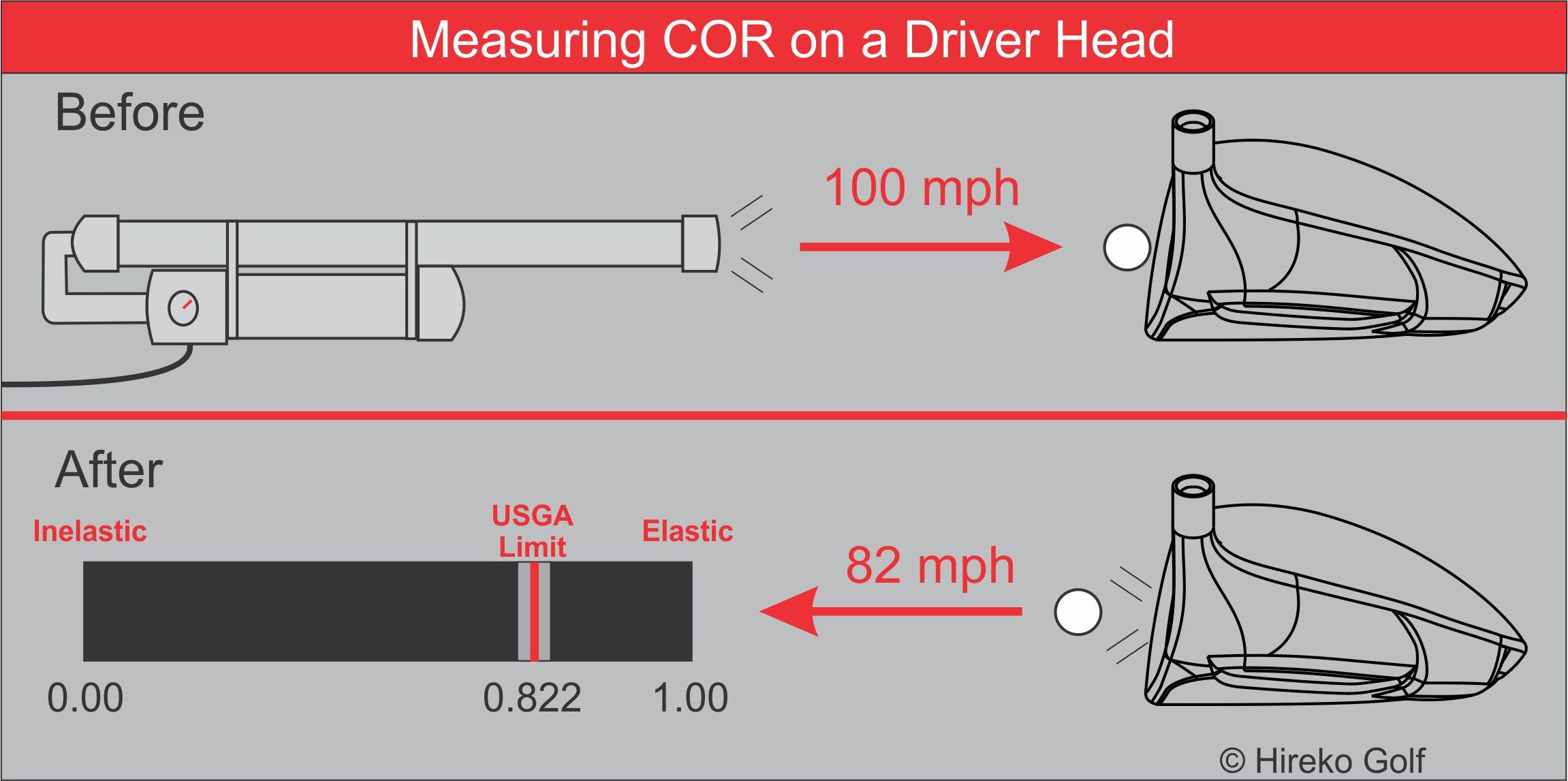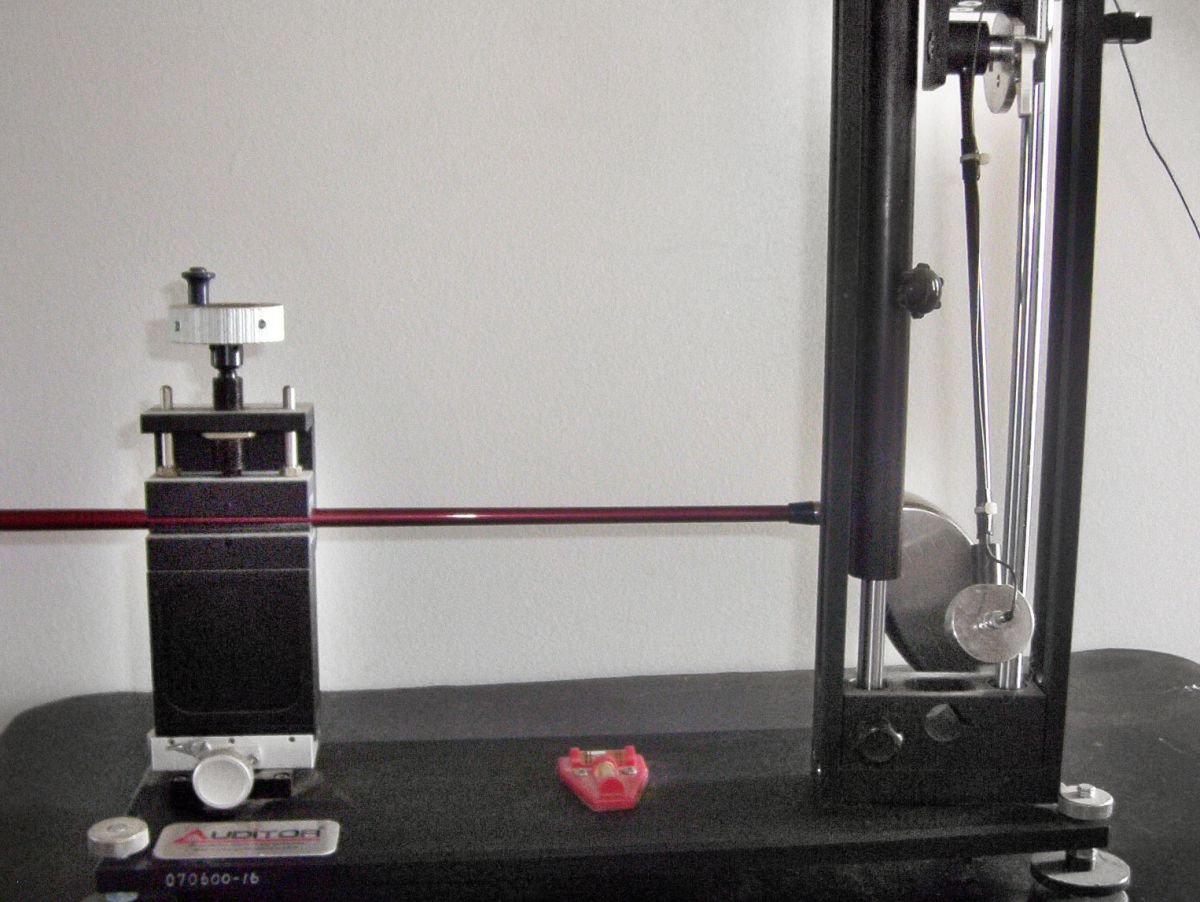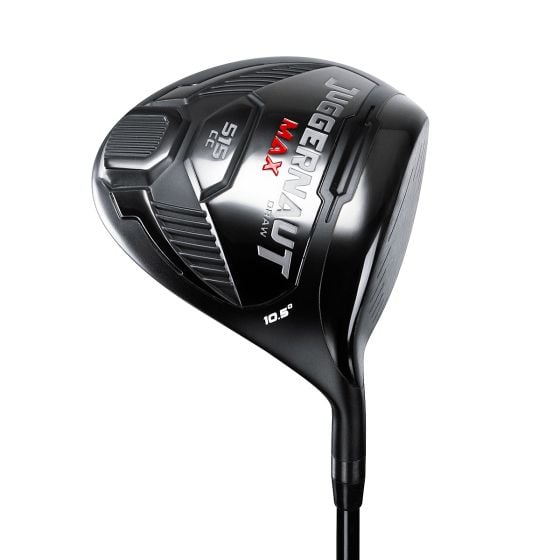Coefficient of Restitution (COR) versus Characteristic Time (CT)
Confused between COR and CT numbers? Hireko has created a calculator to help you be able to convert COR to CT. You can find more information about Coefficient of Restitution and Characteristic Time below. |
COR to CT Calculator
Coefficient of Restitution (COR):
............ ................
Characteristic Time (CT):
Since titanium drivers exploded on the market in 1995, flexible face technology has become a staple in modern golf clubs. Thinner faces maximize what is known as the “rebound” or “trampoline” effect. The more a face rebounds upon impact, the more energy that may be imparted to the ball, increasing distance. Flexible faces are not relegated only drivers, but you find it in fairways, hybrids, and irons too.

Coefficient of Restitution (COR)
As manufacturers got better about producing titanium drivers and started to push the limits on performance, the ruling bodies in golf decided they needed to change their current Equipment Standards. In 1998, the United States Golf Association (USGA) set the Coefficient of Restitution (COR) limit for woods at 0.822 with a test tolerance of .008, effectively taking the limit up to 0.830. Any driver that exhibits a rebound coefficient greater than 0.830 is deemed to be non-conforming. Drivers that exceed the USGA’s parameters cannot be played in USGA sanctioned competitions, nor may they be used in rounds that establish a player’s handicap.
The USGA set up a specific test to measure for the springlike effect. This was conducted by firing a golf ball from an air cannon at different areas of the face and measuring the speeds before and after impact.

In the diagram, we show the ball speed fired at the face to be 100 mph and the ball bouncing off the club face at 82 mph. This would have a COR of 0.820 or an 82% transfer of energy of the head to the ball. If the ball speed prior to impact was 110 mph and exit velocity from the face was 91 mph, then the COR would be 0.827. That is how it works. A perfectly elastic collision would have a COR of 1.000, but due to the Laws of Physics that limit is closer to 0.930.
To put COR in perspective, a stainless-steel driver at that time measured @ 0.780 and "wooden" wood were slightly less. By switching to a titanium driver with COR of 0.830 and all else being the same, the golfer could gain an extra 10 to 15 yards more at 100 mph. Club manufacturers were starting to make drivers with a COR closer to 0.860 which would have furthered the distance gains and that was the reason for the USGA to step in. Even a club designed to a COR of 0.822, the +/- 0.008 tolerance from one driver off the shelf to another could be the difference of 3 to 4 yards depending upon which side of the tolerance it is.
Characteristic Time (CT)
In 2004, the USGA established a different test that would be portable and at the same time faster to obtain a result. The was call the CT test, short for characteristic time. It is a small, pendulum device that strikes the clubface with a metal ball. Sensors would record the amount of time the two objects remain in contact with one another. The spring-like effect is limited to 239 microseconds plus up to 18 microseconds (at the time of writing this) for manufacturing tolerances. Therefore, any club that measures higher than 257 microseconds is deemed non-conforming.
Manufacturers will voluntarily submit products for the USGA and the R&A to get on the Conforming Club List. Manufacturer may also have access to their own CT Pendulum Tester so they can perform their own tests or make sure their staff players have conforming gear. The PGA Tour also conducts CT tests prior to tour events to ensure that players are fully conforming because over time as the club wears, the CT can creep high and potentially make a once conforming driver become non-conforming.

Looking for a non-conforming driver?
Here are several drivers by Hireko that are over the USGA's limit:
 |
 |
| Explore the Juggernaut Max Titanium Driver | Explore the Juggernaut Max Draw Titanium Driver |
 |
 |
| Explore the Juggernaut Titanium Driver | Explore the Juggernaut Draw Titanium Driver |
